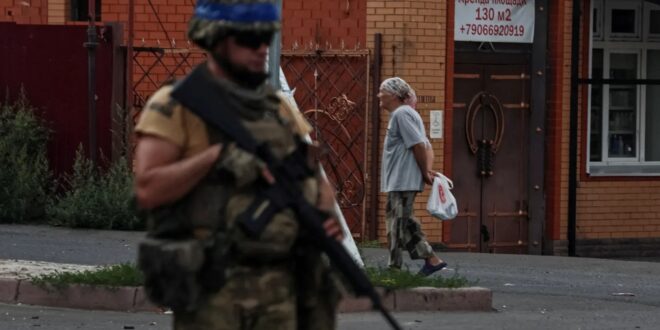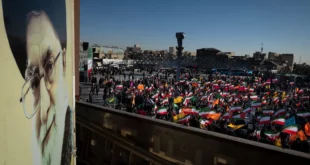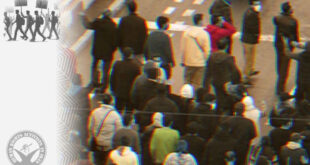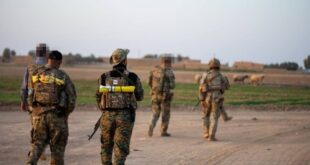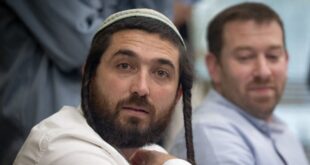The Risks and Rewards of the Offensive Into Russia’s Kursk Region
On August 6, Ukraine launched a bold offensive into Russia’s Kursk region, leveraging surprise and speed to quickly bypass Russian defensive lines. Since then, Ukraine has captured a significant tract of Russian territory and taken hundreds of Russian soldiers as prisoners. Now, three weeks into the attack, Ukrainian forces are holding territory and continuing offensive operations. They appear intent on consolidating a defensible buffer inside Russia.
This offensive has shifted the formerly gloomy narrative, at least for the moment, about the negative trajectory of the war. But Kyiv must decide what to make of its initial win. The offensive has yet to draw significant Russian forces from Ukraine’s eastern regions, and it remains unclear how Ukraine’s leaders intend to translate this tactical success into strategic or political gains. The offensive offers opportunities, but also carries considerable risks and costs. So far, Ukraine’s operations have been conducted by a mixed grouping of units, featuring perhaps 10,000 to 15,000 soldiers in total, with elements of regular brigades and Ukrainian special operations forces. These are some of Ukraine’s better and most experienced troops, with the backbone drawn from Ukraine’s elite Air Assault Forces. Some have been pulled off the frontlines in Donetsk and Kharkiv, where they were fighting against a Russian advance, whereas others would have served as an important reserve to stem Russian momentum.
By redirecting resources away from defensive efforts in the eastern Donetsk region, Ukraine is betting that other parts of the 750-mile front won’t collapse, that it will not lose a large number of soldiers and equipment in Kursk, and that the benefits from its operations in Kursk will outweigh the costs sustained elsewhere. Ukraine’s military leadership also hoped the incursion would divert Russian forces from its frontlines in the east; however, the commander in chief of the Ukrainian Armed Forces, Oleksandr Syrsky, said that Russia has instead intensified its efforts and deployed its most combat-ready units to the Pokrovsk front in Donetsk. Politically, Ukraine is also likely gambling that it can hold Kursk long enough to use it as a bargaining chip in the event that Kyiv is pressured to conduct negotiations. This could work if there is a way to compel Moscow to negotiate on such preferred timelines. But the territory could further strain Ukraine’s military over the winter. Either way, Kyiv hopes the Kursk offensive will spur a change in the perception that the war is on a negative trajectory, unlocking additional material assistance and altering the West’s weapons restrictions.
NOT WAITING
Ukraine’s Kursk incursion has raised flagging morale among its troops and restored its initiative along a patch of the front. The attack has also deeply embarrassed Moscow, demonstrating how unprepared Russia was for an offensive operation along the border. Three months after launching its own incursion into Kharkiv, Russia’s leadership undoubtedly believed that the war was steadily going its way and that time was on its side. Kursk will force Moscow to consider that Ukraine retains options, and that the outcome of this war is still unsettled.
So far, Kyiv has signaled that it will hold Kursk as a buffer space inside Russia, which means Ukrainian forces are there to stay. How large a salient projecting into Russia Kursk will become, and how much frontage Ukraine intends to hold, is not yet clear. But this offensive’s objectives appear much more limited in scope than prior ones. Unlike when Ukraine fought to expel Russia from the Kharkiv region in 2022, the Kursk offensive has not encircled or destroyed substantial Russian forces, which would lead to captured equipment and ruined offensive capability. The prisoners Ukraine has taken are primarily border guards, conscripts, and Akhmat units—paramilitary Chechen units ostensibly under the Russian National Guard. Some Russian conscripts have already been exchanged with Moscow for Ukrainian prisoners of war.
The offensive does not redress the current materiel imbalance in the war. For now, Russia retains an advantage in manpower, equipment, and ammunition. This advantage has not proved decisive, or led to operationally significant breakthroughs, but Russian forces have steadily gained 750 square miles of territory since October 2023, and they have kept advancing in the weeks since Ukraine pushed into Kursk. Recently, the pace of that advance has accelerated, and Ukraine’s position looks increasingly precarious along parts of the front.
Kyiv has signaled that it will hold Kursk as a buffer space inside Russia.
Russian advances put at risk cities. That includes Pokrovsk, which is an important transit hub Ukraine is now forced to evacuate. As the pressure mounts, Ukrainian forces could end up ceding terrain gradually, then suddenly, in some places. But judging success by territory gained is misleading. More important is the balance of attrition. Holding a prepared defense is easier than offense and typically less costly. Before the Kursk operation, Ukraine was slowly bleeding Russian offensive power in exchange for territory gained. That kept the risk of a Russian breakthrough low, and it offered Ukraine the chance to rebuild its exhausted military over the coming months. An expanded strike campaign into Russia with drones and newly made missiles was slowly raising the costs of sustaining the war. This was not an especially daring or novel approach, but it was effective. After a new mobilization law went into effect in May, Ukraine more than doubled the number of volunteers and mobilized soldiers joining the military. Ukraine was steadily addressing its deficit of manpower and fortifications, increasing attrition to Russian forces on the battlefield, and supporting infrastructure behind the frontlines. In this context, the Kursk offensive freights Ukraine’s position with added risk.
The attacking force in Kursk was composed of pieces from many brigades, assault battalions, and specialized units. Unless rotated back, these troops will not be able to plug gaps, serve as reserves, or counter Russian advances inside Ukraine. The offensive, in other words, weakens Ukraine’s already shaky front. Following Russia’s Kharkiv offensive in May, Ukraine’s military has been stretched thin, with defensive lines buckling across Donetsk. Russian forces have also been pushing Ukrainian lines back along several axes running from Vuhledar to Pokrovsk, Toretsk to Chasiv Yar, and near Kupiansk.
This is not to say that the offensive was inherently ill conceived. The operation was well-executed and quickly achieved several limited, but important, objectives, which would have made it an effective one-week raid. If it could pull significant Russian forces from other fronts, then the payoff would be more than worth the risk. But thus far, there is little evidence of it doing so.
The timing and organization of the offensive suggests that Ukraine’s leaders judged they needed to act. One possible reason is the looming U.S. election, which threatens to push Kyiv into negotiations with Moscow while in a position of weakness. In theory, by seizing Russian territory, Ukraine can significantly improve its bargaining power. Ukraine’s leadership may therefore judge that they are now better positioned for whatever political reality they will face in January. But this is a matter of perspective. No negotiations were in the offing, and Kyiv certainly could have waited until it had a sense of the future of U.S. policy. Right now, there is no compelling reason for why Moscow must negotiate while Ukraine holds its territory, and no indication that it might be inclined to do so. If anything, Russia is likely to maintain offensive pressure along the frontline while building up forces to eventually counterattack at Kursk. A Russian attack could be more effective in the winter, once the dense foliage in tree lines used by Ukrainian forces for concealment dissipates.
AN UNEXPECTED OFFENSIVE
Although Russia had two defensive lines established in Kursk, they were lightly manned by border guards and conscripts, backed by an Akhmat unit. Effectively combining armor, mechanized infantry, and artillery, Ukrainian forces quickly bypassed or encircled the Russian defenders. Ill equipped and unprepared to counter such a force, many surrendered. The Ukrainian military demonstrated that it had learned from past offensives, bringing mine-clearing vehicles, air defense, and electronic warfare systems to support the initial assault. Ukraine also seems to have achieved success countering Russian reconnaissance drones with first-person-view drones at the beginning, limiting Russia’s ability to quickly respond. Even though Russian drones detected and observed the offensive, Ukraine achieved operational surprise. Planning appears to have been closely held, even within Ukraine’s own government circles. Kyiv did not inform international partners, who might have discouraged it or leaked the plans. During past operations, such as Ukraine’s 2023 summer offensive or its second raid into Russia’s Belgorod region in the spring of 2024, Russian forces appeared well positioned in advance with detailed knowledge of Ukrainian planning. In this case, there were no Russian units pre-positioned to respond and no operational reserve that could quickly answer.
In an ode to the 2022 Kharkiv offensive, which was also planned by the Ukrainian commander in chief Oleksandr Syrskyi, Ukrainian units leveraged speed, sowing confusion as they flew down roads through multiple towns. Early Russian efforts to send reinforcements were countered with High Mobility Artillery Rocket System (HIMARS) strikes, destroying columns of Russian troops that were careless in their positioning. The initial Russian response has been shambolic, typical of the military leadership’s inability to respond to dynamic situations. Command-and-control arrangements are also confusing in this part of Russia, where responsibilities between the Moscow military district, forces belonging to the Leningrad military district, the Federal Security Service, and other organizations overlap. Unlike in Ukraine, where the battlefield is divided among regional groupings, it has taken Russia some time to sort out who oversees the overall, national response versus who is commanding the military effort.
Russia has been sending reinforcements to the region. They feature an incohesive grouping of conscripts from deeper within the country and regular units redeployed from less important fronts inside Ukraine. The Russian military used battalions piecemeal from their brigades, including naval infantry and airborne forces, and deployed special operations and irregular units. Thus far, Russia has pulled from Zaporizhzhia and Kharkiv while maintaining offensive operations around the eastern cities of Vuhledar, Pokrovsk, Toretsk, and Kupiansk. It also appears that Russia is prioritizing the redeployment of unmanned aerial vehicle strike units that can move faster and have less of an effect on Russian offensive operations than infantry reserves. At the same, Russia has quickly constructed fortifications deeper in Kursk. Russia’s response to Kursk, thus far, appears to be an economy of force effort to contain the incursion, as it continues to prioritize offensive operations in Donetsk. Moscow may be showing a degree of caution, aware that, in past years, Ukraine has typically launched attacks on multiple axes. It is possible that this is not Ukraine’s only planned offensive operation.
Russia’s air force has shifted air support from other fronts, particularly from Kharkiv, to counter the Kursk incursion, but the overall Russian offensive effort has not slowed. Most recently, Russian units have captured most of Niu-York, advanced into Toretsk, and come within artillery range of Pokrovsk. As a key transit hub, Pokrovsk important for sustaining defense in Donetsk and blocking further Russian advances. Even if Russia cannot quickly capture the city, placing Pokrvosk within artillery range has forced civilians to flee and will prevent its use as a rail hub for the area. The Russian advance there also threatens Ukraine’s flanks and could force a larger retreat down from Kurakhove and Vuhledar. The Kursk offensive has left Ukraine short on reserves to respond to any Russian breakthrough and, in some cases, rationing artillery ammunition.
UNCERTAIN TERMS
Although Ukraine’s initial losses in Kursk have been light, they are mounting as Russian forces become more organized and deploy reinforcements. Ukrainian forces are digging in, and Kyiv has signaled its intent to setup a military administration in the region. If Ukraine intends to hold the Kursk pocket for the foreseeable future—and all indicators suggest that it does—there is a strong likelihood the region will become the site of another grinding battle.
Much depends on how Moscow responds. If Russian forces throw themselves at Ukrainian lines, then Kyiv may force Moscow into a battle on its terms, lifting pressure across the front. This would be akin to how Russia responded to Ukraine’s capture of the village of Krynky across the Dnieper River in Kherson in 2023. Russia prioritized retaking the village, despite its minimal strategic importance, and sustained heavy losses among elite units as a result. Kursk could similarly sap Russian offensive strength, shifting the fight to Russian territory. Moscow may also feel compelled to create a sizable operational reserve and deploy larger garrisons along its borders. This, too, would reduce the combat power Russia has available to fight inside Ukraine. But if Russia contains the offensive and focuses on weakening Ukrainian forces with aviation, drones, and only a minimal commitment of troops, then this gambit may not pay off for Kyiv.
Ukraine’s strategy does not yet appear fully formed. The country’s military is working out logistics, communications issues, and other necessities for sustaining this salient. It will have to establish a defensible set of positions and a broader but shallower buffer inside Russia. Its advances in Kursk are likely designed to secure these objectives; the strikes on bridges, for example, are supposed to further isolate Russian forces along the border. Kyiv will have to choose whether to hold what it has or to invest more scarce resources into the operation in an effort to force a much larger Russian effort to counter it. But the risks should not be understated. The best-case scenario is that Ukrainian forces will hold Russia to relatively minor gains in Donetsk and retain Kursk with a sustainable force commitment. The offensive could also lead to changes in Western policy on the use of long-range strike weapons and infuse much needed energy into the West’s thinking on the way forward at this point in the war. The worst-case scenario is that, months from now, Ukraine will have lost significant tracts of land in its east and retained no territory in Kursk that it can use as a bargaining chip. The deeper Ukraine advances into Russia, the greater the risk of overextension.
COSTS AND BENEFITS
Ukraine had alternative options at this stage of the war. It could have focused on defense and reconstituted its understrength forces while expanding long-range strikes against Russia. Ukraine’s newly developed capabilities increasingly put Russian military and economic infrastructure at risk. Ukraine’s new volunteer and conscripted soldiers could have been sent to refill brigades holding the frontlines. They would have been used to build new formations. If Ukraine had focused on defense, it would have had a good chance of exhausting the Russian offensive while fixing manpower issues and stabilizing the frontlines by winter. At that point, Kyiv could have assessed its options.
Ukraine still would have lost territory in Donetsk, but it would have halted the Russian offensive and possibly held some of the cities currently at risk. Russia had reached the peak of its materiel advantage, so the risk of a major Russian breakthrough was decreasing, and Moscow could have been held to incremental gains. Ukraine could then have launched an offensive like the one in Kursk in 2025 under much more favorable circumstances. Russian limitations in equipment and manpower would have become more glaring, and Ukraine would have the benefit of newly formed brigades by that point, reducing the overall risk in force allocation.
None of these options were risk-free or cost-free. Military strategy is about choices. The Kursk offensive is creative, and it avoids a symmetric fight against a numerically superior opponent. Yet the longer the battle goes on and becomes positional in character, the more likely those advantages will dissipate. A fair amount of the future also depends on what happens not just at Kursk, but also in the battles for Ukraine’s cities in Donetsk. Kyiv may be resigned to losing cities such as Pokrovsk, assuming the consequences will not prove dramatic. But that, too, is a gamble. Both on the ground and in public perceptions, the pendulum can swing rather quickly if the news from the front is a steady drumbeat of lost cities and towns.
Ukraine has not been immune to sunk-cost thinking.
When under pressure, a fair bit can go wrong in coordinating defensive operations, especially among depleted units, and commanders may struggle to get an accurate understanding of the situation. Recurring problems with unit rotations, adjacent unit coordination, unclear command relationships, and employment of attached units by brigades exacerbate Ukraine’s relative inferiority in manpower and ammunition. Some of these issues are made worse by the Ukrainian military’s structure around brigades. As a result, tactical mistakes can become even more costly and lead to greater Russian advances. Many of the elite brigades deployed to Kursk would be less likely to commit these mistakes.
In the past, Ukraine has reinforced success, but its leadership has not been immune to the sort of sunk-cost thinking that leads states to feed resources into battles in which the costs outweigh the benefits, particularly once the military factors change. Early in 2023, Ukraine spent too many of its more experienced troops in a costly and geographically unfavorable battle over the city of Bakhmut, which was ultimately lost. Later that summer, Ukraine committed its reserves to a failed offensive, even though its day-one objectives had not been reached. It kept trying to advance as late as November, long after it ran out of assault-capable infantry and ammunition. And when Ukraine launched a cross-river operation in Krynky, its marines spent eight months holding a narrow lodgment, a small defensible position on the other side of the river. Russian forces wasted many of their airborne units trying to counterattack the position, but Ukraine’s marines paid a high price to sustain the operation, which had no hope of developing into anything other than an attritional battle. Although Ukraine might see Krynky as a model to improve on, the salient in Kursk is much larger and will require far more manpower to maintain.
As with the battle of Bakhmut and the 2023 summer offensive, it may take some time before observers can properly assess the Kursk operation. Furthermore, open-source intelligence is more likely to provide a distorted picture during rapid offensives that involve a more fluid frontline than they are during the routinized fighting taking place across the front. Maps that rely purely on open-source information and geolocations are, in particular, less likely to accurately reflect day-to-day changes in the frontline because much of the footage is not released publicly each day. This can give a distorted view of the rate of advances. Ukraine has a greater incentive than Russia does to withhold footage from Kursk, and it may want to publish misleading information to fool Russia. For outside observers, this makes it more difficult to assess the casualty ratio and relative equipment losses between Russia and Ukraine. The habit of both sides to deploy individual companies or battalions from brigades in a piecemeal fashion may also give false impressions about the size of the forces committed. Observers need to be cognizant that their view of the operation will almost certainly be flawed, and they need to be careful in drawing lessons about what happened and why.
WHITHER A STRATEGY?
Determining what this operation says about Ukraine’s overall strategy and the implications it has for the broader war effort is essential. In some ways, the offensive raises more questions than answers. Kyiv has long sought to end the war on favorable terms or, at the very least, avoid an unfavorable settlement that includes compromising Ukraine’s sovereignty or conceding territorial losses. In 2023, Kyiv hoped to gain the necessary leverage by breaking through Russian lines in the south and threatening Crimea. Seizing a part of Kursk may be an alternative means to achieve a similar end, assuming Ukraine can hold the territory for long enough.
For much of 2024, the West has been supporting a Ukrainian strike campaign in Crimea without a good explanation for what was meant to follow. It was serviceable as an end unto itself, degrading Russian air defense and support infrastructure. But that campaign now seems disconnected from Ukraine’s efforts in Kursk and its broader drone strike campaign against economic infrastructure in Russia. A series of disparate efforts do not a strategy make. If it was not clear before Kursk, the offensive puts into sharp relief the apparent lack of an agreed strategy between Ukraine and its Western partners. It therefore presents both challenges and opportunities. This turn of events should lead to a revision of the current strategy in this war, assuming one exists.
Since 2023, Washington has been out of ideas for how to successfully end the war on terms favorable to Ukraine. Kyiv, meanwhile, has been focused on stabilizing the frontline, but equally worried about the prevailing gloomy narrative and the sense that Ukraine is losing the war. The Kursk operation helps address the latter at the risk of doing damage to the former. Whether or not Kursk succeeds, at least it is not an attempt to refight the failed 2023 offensive, a set-piece battle in which Ukraine held no decisive advantages. That said, Kyiv’s present theory of success remains unclear.
Beyond the Kursk offensive and the situation at the front, Russia’s strike campaign against Ukraine’s energy grid is increasingly the bigger problem. Ukraine faces an uncertain winter. It needs generators and air defense to close gaps in its coverage. More important, Ukraine needs a way to compel Russia to stop these strikes, if not in 2024, then certainly in 2025. In this light, Ukraine’s desire to lift the remaining restrictions on the use of Western long-range strike systems is understandable. The Kursk offensive has prompted that conversation, but it needs to do much more. Holding Kursk as a bargaining chip, expanding strikes, and putting economic pressure on Russia could significantly strengthen Ukraine’s hand, assuming Ukraine can also hold the line, exhaust Russia’s offensive potential, and withstand Russia’s strike campaign this winter. However it ends, the Kursk offensive needs to provide the impetus for Ukraine and its partners to get on the same page—and shake off the current drift.
 Eurasia Press & News
Eurasia Press & News
